News
Interview: Esther Jacobs talks to Lauren Peel, Seychelles Manta Ray Project
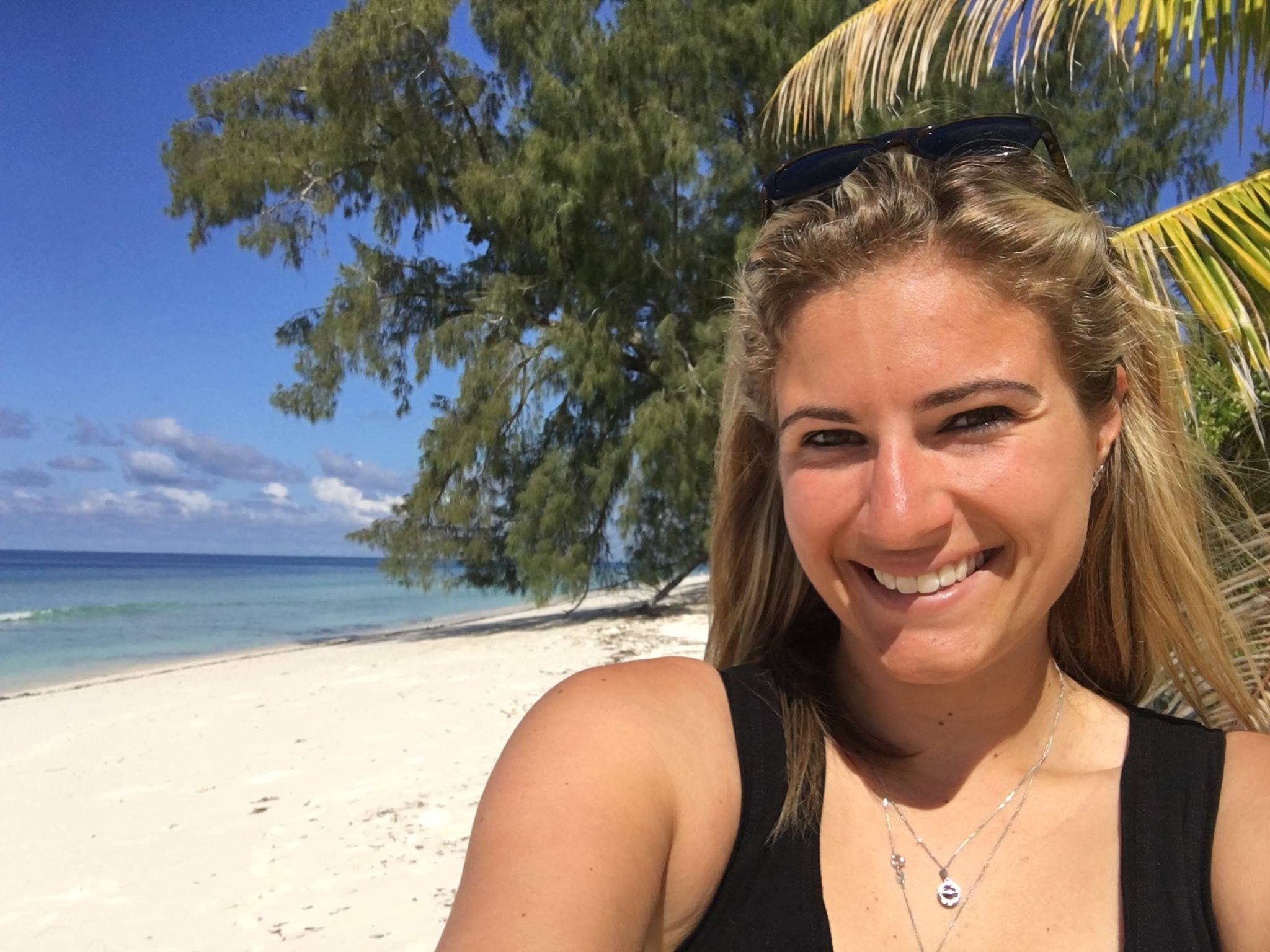
Lauren Peel has a BSc (Hons.) in Zoology from University of Western Australia. She is currently a PhD candidate in marine biology at University of Western Australia and project leader for The Manta Trust and Save Our Seas Foundation’s Seychelles Manta Ray Project.
EJ: How did you end up in science and research?
LP: I have always been in awe of the natural world and when I was five years old, my parents took me to the Ningaloo Reef in Western Australia. I could not get enough of snorkeling the reefs and exploring the intertidal pools to see what new creatures I could discover, and it was from that moment that my passion for the ocean and marine life was well and truly ignited. It wasn’t long before everyone knew what answer they would get when they asked me “What do you want to be when you grow up, Lauren?” – “A marine biologist!” I would say, with a huge grin on my face.
My fascination with the world around me drove me to complete my Bachelor’s degree in 2011 at the University of Western Australia, where I majored in zoology and chemistry. It was during my Honours year however, when I was working with Port Jackson sharks, that I discovered my love for all things elasmobranch. I knew then that I wanted to make a career out of studying these incredible animals and promoting their conservation through education, and I have been working towards achieving that goal ever since.
EJ: What’s your favourite species of elasmobranch?
LP: Tough question! In all honesty I do not think I can pick a favourite. I have been incredibly fortunate to work with a wide range of elasmobranch species and I have learnt so much from my experiences with each of them. One of the things that fascinates me the most about sharks and rays is the incredible amount of diversity that they display in everything from their body shapes to their life history strategies, so I think elasmobranchs collectively are my favourite.
EJ: You were a past field specialist for Oceans Research. Do you miss working with them?
LP: Yes I was, and it was a phenomenal two years that I spent working there. Although I do miss working with my colleagues and the white sharks, one of the best things about working in marine biology is the connectivity of researchers around the world – everyone knows everyone, and sometimes it feels like we are all from the same small town. This means that even though I am no longer based in Mossel Bay, I am still able to keep in touch with the scientists and staff who are there, visit them when I can, and plan future collaborations and research projects with them.
EJ: What was your favourite aspect of working with Oceans Research?
LP: There are countless things that I loved about working with Oceans Research, but my favourite thing would have to be working with the new interns each month and watching them learn the techniques that we used to study the diverse array of marine life present in Mossel Bay. From assessing the community structures present on the intertidal platforms, to tracking dolphins, and using photo-ID to count white sharks, no two days were ever the same and it was always exciting to share new experiences with the interns and research team.
EJ: What can you tell us about your past and / or current research?
LP: I first started studying elasmobranchs during my Honours year at the University of Western Australia where I studied the visual system of the Port Jackson shark (Heterodontus portusjacksoni). My research aimed to describe the structure and physiological function of the retina in this benthic shark species, and relate these findings to its behavior and ecology – it was so interesting. While I was completing my research project, I found out about the Oceans Research internship program and was an intern there for a month before returning as a Field Specialist for the next two years.
I am now working towards a PhD in Marine Biology; investigating the population dynamics, movement patterns and ecology of the Seychelles reef manta ray (Manta alfredi) population for the Seychelles Manta Ray Project with the support of the Save Our Seas Foundation, The Manta Trust, The Australian Institute of Marine Science, and The University of Western Australia, and I love it. The fieldwork for my research is based at the Save Our Seas Foundation’s D’Arros Research Centre, and it has been a fantastic and productive experience so far. For more information about this research, and lots of photographs and information about manta rays, people can follow the Project’s Facebook Page: www.facebook.com/SeychellesMantaRayProject.
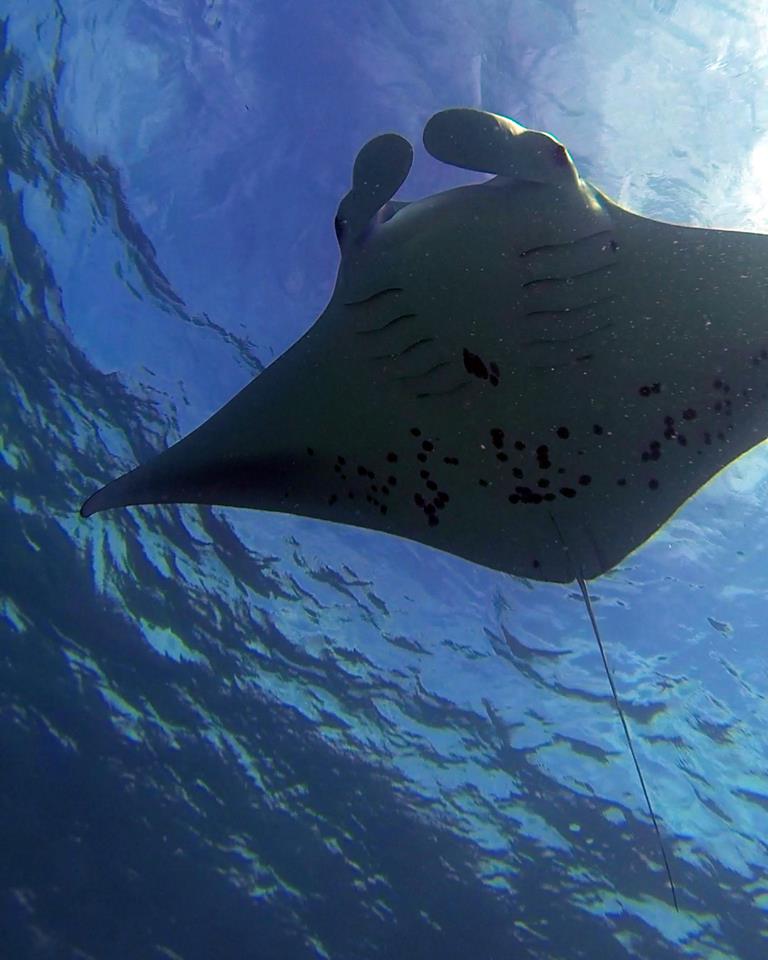
EJ: What has been your most important scientific finding?
LP: Using a combination of acoustic and satellite telemetry, we are learning a lot about the movement and residency patterns of reef manta rays throughout the Amirantes Island Group of the Seychelles. Our acoustic tags are helping us to unravel the seasonal movement patterns of the mantas, and our satellite tags – the first to be deployed on any manta ray in the Seychelles – are showing us how far these animals travel and how they utilize the water column as they move. By pairing this information with the photo-identification component of the Seychelles Manta Ray Project, we are becoming better equipped to estimate the size of the Seychelles reef manta ray population as a whole.
EJ: Have there been any surprises?
LP: The Seychelles Manta Ray Project represents the first study of manta ray biology and ecology in the Seychelles, so we are learning new things about the reef manta population all the time. As individual manta rays can be identified by the unique pattern of spots that they have on their bellies, a key component of this project is to include as many people as possible in our research by encouraging them to submit photographs of the mantas they have seen throughout the country. The Seychelles is made up of 115 small islands spread across some ~1,400,000 km2, so we need as much help as possible to find the mantas and to record both who and where they are. It has been a fantastic experience networking with new people across the Islands, and it is always exciting when new manta rays are found, photographed, and added to our database.
EJ: What has been your biggest challenge?
LP: The biggest challenge for me so far was organizing and coordinating the first field trip for this project. Working on a remote island definitely has its difficulties and I had never organized an international field trip before. Needless to say, every hour of preparing paperwork, ordering equipment, and planning was worth it – I am still in awe of D’Arros Island and the manta rays that I am so lucky to work with and I’m now eagerly awaiting the next field season.
EJ: What’s more important, science or conservation?
LP: I think that science and conservation need to work hand-in-hand with each other in order to have the highest level of impact. Conservation strategies and outreach programs need to be scientifically-informed to ensure that resources are distributed effectively and that peoples’ efforts are directed to where they are most needed, and conservation programs can be a fantastic way of delivering scientific information to diverse groups of people on large scales. You can’t really have one without the other; they are both important.
EJ: What is the main goal of the Seychelles Manta Ray Project?
LP: The main aim of the Seychelles Manta Ray Project is to expand our understanding of the Seychelles reef manta ray population so that we can inform the development of targeted conservation strategies aimed at protecting their population in this region of the Indian Ocean. The results of this study will also be used to promote a more global view of the conservation needs of manta rays, which are currently listed as Vulnerable on the IUCN Red List of Threatened Species.
This research is made possible by generous funding contributions from the Save Our Seas Foundation (SOSF) and SOSF – D’Arros Research Centre, and through the support of the Ministry of Environment, Energy and Climate Change of the Republic of Seychelles.
EJ: Do you hope your research will aide in manta ray conservation?
LP: Very much so. One of the main reasons I decided to pursue a career in marine biology was because I wanted to share my passion for marine life and elasmobranchs with as many people as possible, and because I wanted to be able to contribute to the conservation of these incredible animals. Over the past 75 years, global manta ray populations have suffered drastic declines with numbers decreasing on average by 30% and losses as large as 80% being observed in some areas. These declines are caused by a number of anthropogenic factors, but are primarily driven by demand from the traditional Chinese medicine market for manta ray gill plates which are dried, put into a soup, and sold as ‘Peng yu sai’. It is believed that gill plates possess medicinal qualities that can benefit the consumer, yet there is no scientific evidence to support such claims.
Like most elasmobranchs, manta rays have an extremely slow reproductive rate – maturing at around 15-20 years of age and producing one pup every one to three (or even more) years – and this greatly compounds the impact of these fishing pressures. As I mentioned before, I believe that conservation and management strategies should be designed and implemented based on scientific evidence, and I hope the results of my research will allow for protective legislation – ideally at a national level – to be put in place for the manta rays of the Seychelles to ensure that their population can be protected long into the future.
EJ: What does conservation mean to you?
LP: To me, conservation means respecting the life and ecosystems around you, and making sure that future generations have the opportunity to experience all of the wonders of nature. It’s about promoting sustainability, and understanding that every decision we make in our life has an impact on the world around us.
EJ: Do you have any advice for anyone keen to follow in your footsteps?
LP: My advice would be to work hard, make the most of every opportunity you get given, and to network and volunteer whenever you can. Most importantly – be excited. The ocean is a massive and mysterious place and we still have so much left to learn about it, so never stop asking questions.
EJ: If the people who are reading this have their own photographs of manta rays, is there any way for them to get involved in manta ray research, too?
LP: Absolutely. If you have seen or photographed a manta in the Seychelles – or anywhere else in the world – you can contribute directly to the research and conservation of manta rays by submitting your images and sighting encounters through the Manta Trust’s online submission form. Alternatively, you can email your images to IDtheManta@mantatrust.org – but please don’t forget to let us know when and where you saw your manta(s).
The more information you provide, the more information we can give you on your encounter. We reply to each submission with details of the history of the manta ray that was photographed which includes information such as: the name of the manta, its ID number, its gender, its size, and where and when it has been sighted before. If you happen to spot a manta ray that has not been previously recorded, you can also choose its name.
Your help is greatly appreciated, so please take a few minutes to send us your manta images and/or sighting details and be proud of your role as a citizen scientist!
For information on Oceans Research and their internship opportunities visit www.oceans-research.com.
Gear News
Go anywhere with Stahlsac
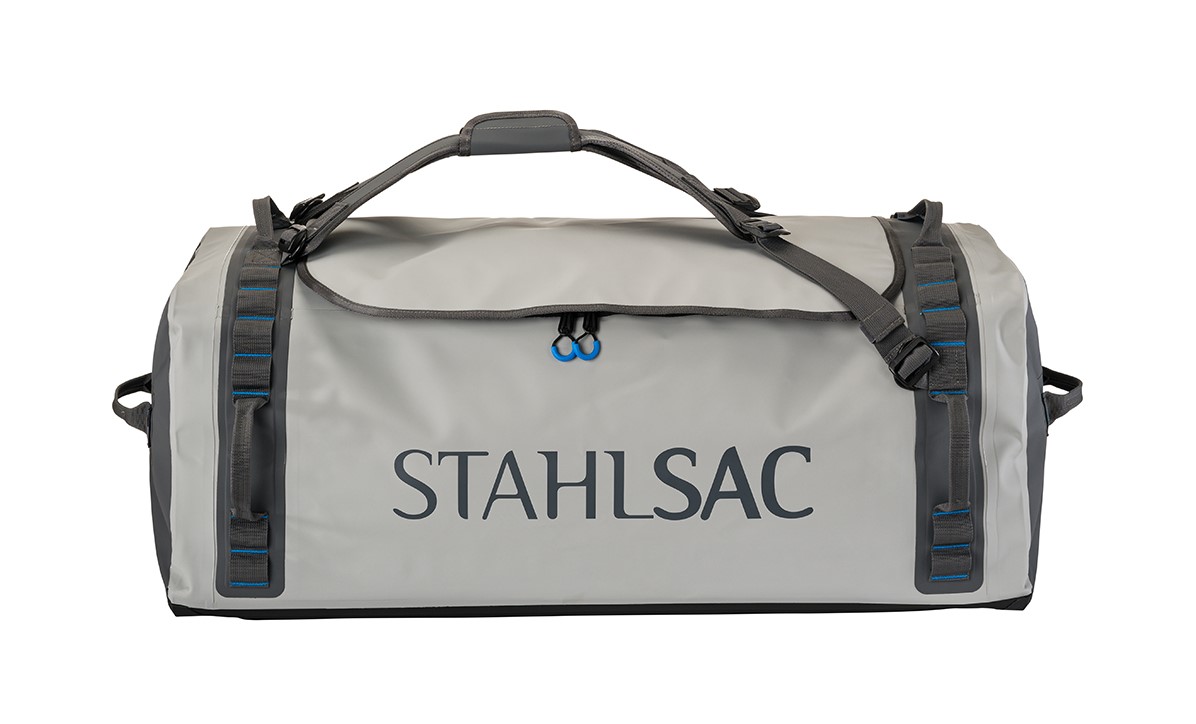
Stahlsac dive bags and travel luggage are built for our community of divers, surfers, kayakers and outdoor explorers who need bags that are constructed with durability, toughness, and 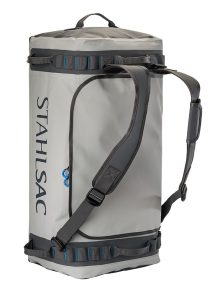 the highest quality the industry has ever seen. We were founded by one man determined to build better watersports and dive bags, and today, that mission is carried on by many. Adventure doesn’t just present itself; it requires discovery. When we design dive bags, we make sure they are tough enough for you to explore in all conditions—warm and cold, wet and dry—to the nearest and farthest reaches of the earth. And for those times you want to push the boundaries of adventure, Stahlsac dive bags make sure you can truly GO ANYWHERE.
the highest quality the industry has ever seen. We were founded by one man determined to build better watersports and dive bags, and today, that mission is carried on by many. Adventure doesn’t just present itself; it requires discovery. When we design dive bags, we make sure they are tough enough for you to explore in all conditions—warm and cold, wet and dry—to the nearest and farthest reaches of the earth. And for those times you want to push the boundaries of adventure, Stahlsac dive bags make sure you can truly GO ANYWHERE.
Abyss Duffels
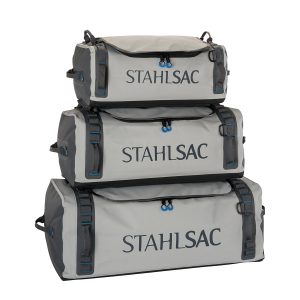 Made to be your partner-in-crime on every adventure, Stahlsac’s Abyss Duffels protects your gear from Mother Nature’s worst. Tough and 100% waterproof with double-TPU nylon material that shrugs off daily wear-and-tear, and RF-welded seams further boost the bag’s potential for lifelong exploring. Get Wet. Get Lost. Go Anywhere with Abyss.
Made to be your partner-in-crime on every adventure, Stahlsac’s Abyss Duffels protects your gear from Mother Nature’s worst. Tough and 100% waterproof with double-TPU nylon material that shrugs off daily wear-and-tear, and RF-welded seams further boost the bag’s potential for lifelong exploring. Get Wet. Get Lost. Go Anywhere with Abyss.
- A weatherproof duffel for trips, travel, and adventure
- Ultra-durable double-TPU nylon protects your gear
- Material repels water and keeps your equipment dry
- RF-welded seams are flush, tough, and waterproof
- Removable straps transform duffel into backpack
- Zippered internal stow compartments carry essentials
- External zippered flap is easy to open and close
- Welded external handles make transporting a breeze
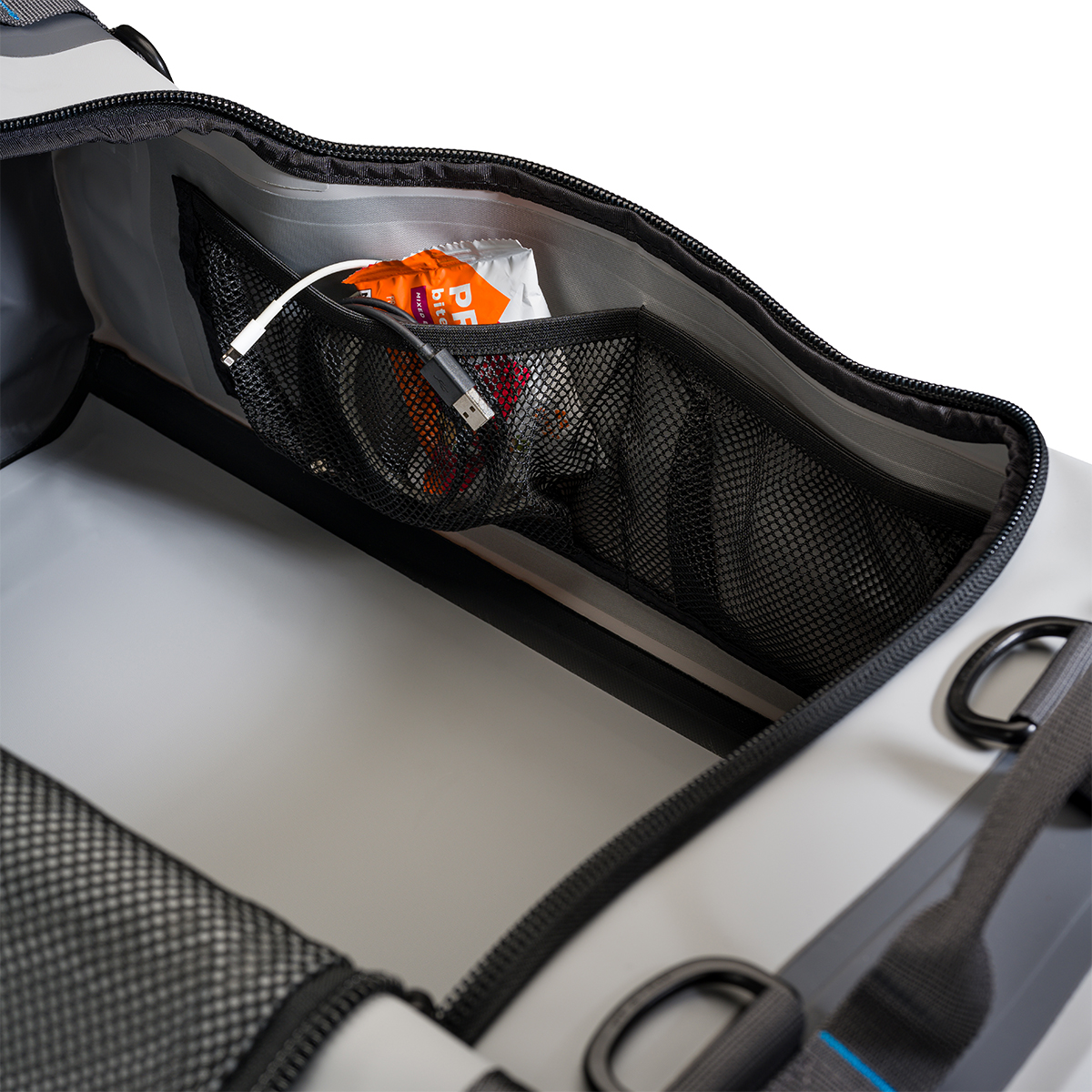
Panama Mesh Backpack
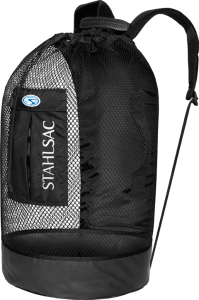 The most copied design in scuba diving, the Stahlsac Panama Mesh Backpack is the “original” design and features two high-density foam padded shoulder straps, extra durable polyester mesh, duffel bag handles and our unique zippered dry pocket inside that combines with a wet pocket outside. The bottom’s built from reinforced 18-gauge PVC nylon to combat the wear and tear of your active coastal lifestyle, and, as a bonus in every bag, we supply a 12″ x 12″ mesh drawstring satchel for extra stowing utility. Pack up your beach kit and go.
The most copied design in scuba diving, the Stahlsac Panama Mesh Backpack is the “original” design and features two high-density foam padded shoulder straps, extra durable polyester mesh, duffel bag handles and our unique zippered dry pocket inside that combines with a wet pocket outside. The bottom’s built from reinforced 18-gauge PVC nylon to combat the wear and tear of your active coastal lifestyle, and, as a bonus in every bag, we supply a 12″ x 12″ mesh drawstring satchel for extra stowing utility. Pack up your beach kit and go.
- Density foam padded shoulder straps
- Outside wet/dry pockets
- 2 Carry handles
- Tough, snag-resistant polyester mesh
- Reinforced PVC bottom
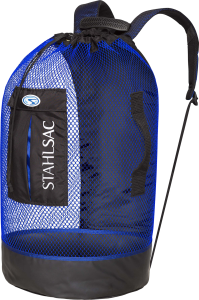
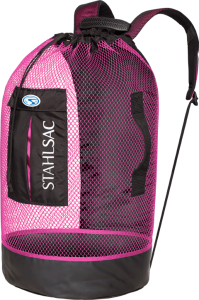
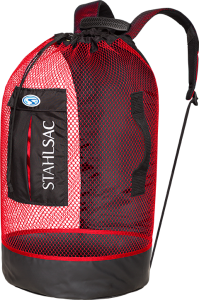
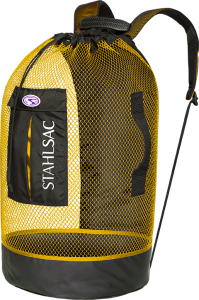
For more information about Stahlsac bags, visit www.stahlsac.com/dive-bags.
Sea & Sea is the home of Stahlsac and other leading diving brands in the UK.
Blogs
EXCLUSIVE: Jeff Goodman interviews Mark Spiers, CEO of New Scuba Diving Training Agency NovoScuba

In a video recorded exclusively for Scubaverse.com, Jeff Goodman interviews Mark Spiers, CEO of new scuba diving training agency NovoScuba.
Find out more about NovoScuba at www.novoscuba.com.
-

 News3 months ago
News3 months agoCapturing Critters in Lembeh Underwater Photography Workshop 2024: Event Roundup
-

 Marine Life & Conservation Blogs3 months ago
Marine Life & Conservation Blogs3 months agoCreature Feature: Swell Sharks
-

 Blogs2 months ago
Blogs2 months agoMurex Resorts: Passport to Paradise!
-

 Blogs2 months ago
Blogs2 months agoDiver Discovering Whale Skeletons Beneath Ice Judged World’s Best Underwater Photograph
-

 Gear Reviews3 weeks ago
Gear Reviews3 weeks agoGEAR REVIEW – Revolutionising Diving Comfort: The Sharkskin T2 Chillproof Suit
-

 Gear Reviews3 months ago
Gear Reviews3 months agoGear Review: Oceanic+ Dive Housing for iPhone
-

 News2 months ago
News2 months agoPADI Teams Up with Wellness Brand Neuro to Drive Ocean Change and Create a Blue State of Mind
-

 Marine Life & Conservation2 months ago
Marine Life & Conservation2 months agoSave the Manatee Club launches brand new webcams at Silver Springs State Park, Florida

















